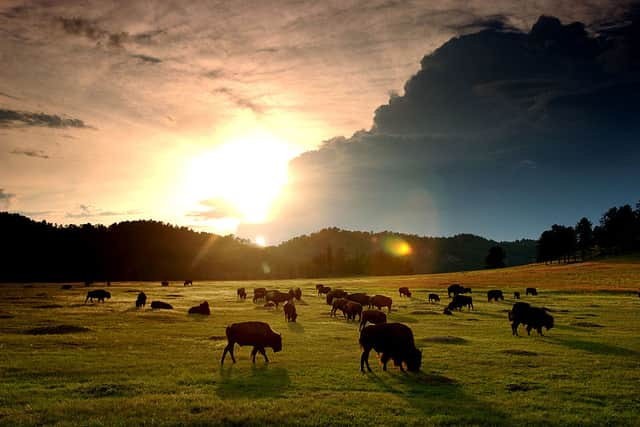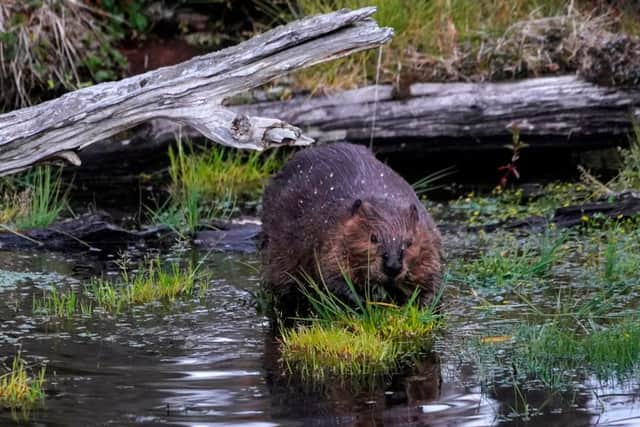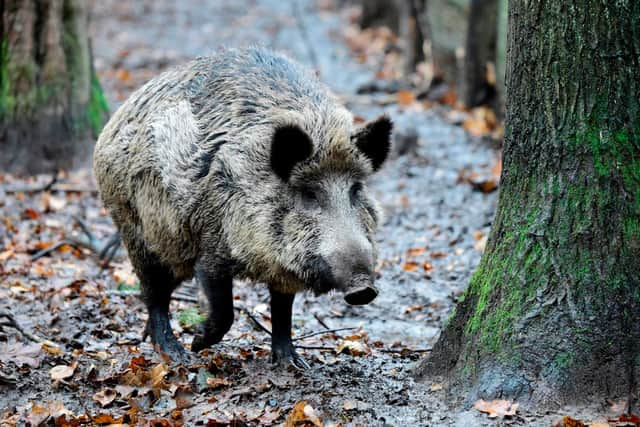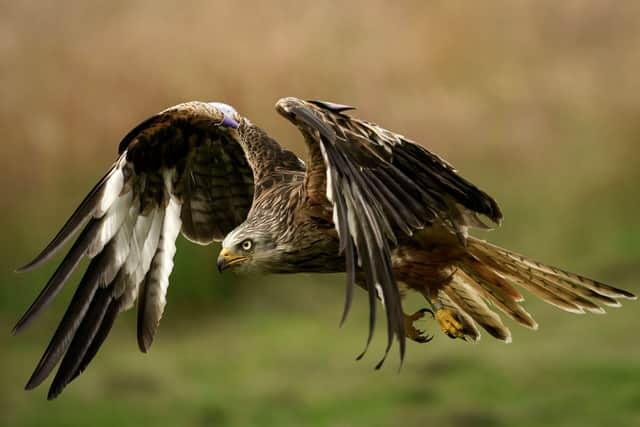Bison, wild boar and beavers: which animals were rewilded in the UK in 2022?
and live on Freeview channel 276
Animals such as beavers and bison used to roam the UK’s countryside in abundance. But then they were driven from their homes - and to the brink of extinction - by hunting and culling from an ever growing population.
However, environmental experts and conservationists have tried to rectify this in recent years via rewilding, a process wherein animals which were critically endangered or previously thought to be extinct are returned to their homes. This has huge benefits when it comes to restoring habitats and ecosystems, and means we may be able to see some of the creatures in the wild once again.
Advertisement
Hide AdAdvertisement
Hide AdHere’s a list of all the species that have been re-introduced to the UK in 2022.


Bison
Bison were hunted to extinction in the UK 12,00 years ago - but this year started roaming on British soil once again. The animals were introduced to a forest in Kent in south-east England, in a project being run by the Kent Wildlife Trust.
The natural behaviour of bison - such as grazing, eating bark, and dust bathing - can help restore the biodiversity of a landscape, and experts say their prescence can contribute to tackling climate change too. The herd seems to be doing well so far, as back in September, a bison calf was born, further securing the future of the animals.
Ranger Tom Gibbs said: “I’ll remember it for the rest of my life - coming into work and lo and behold find this little baby calf alongside mum. She started off like Bambi on ice. Now when you see her, she’s looking like a proper little bison - she’s strong, stocky and has probably tripled in size in three months.”


Beavers
Advertisement
Hide AdAdvertisement
Hide AdBeavers too were hunted to extinction around four hundred years ago - for their fur, meat and glands. But thanks to successful reintroduction efforts, there are now more than 1,000 living wild in UK streams and rivers.
But the progress doesn’t stop there. Since October, beavers have been recognised as native wildlife and therefore have legal protection - meaning it is against the law to deliberately trap, injure, kill, or otherwise disturb the creatures.
Beavers are great for the environment because the dams they create help reduce downstream flooding, and, in dryer periods, help increase water retention. This was proven in August during the UK’s record heatwave, when beavers helped transform dry, scorched countryside in South West English countryside into a nourished wetland via their dam construction.


Wild boar
Another species back in abundance is wild boar, around 800 years after becoming extinct from British countryside due to overhunting and habitat loss. Populations have been reestablished both in the Scottish Highlands and in the Forest of Dean, with estimates saying there are now around 8,000 of the creatures.
Advertisement
Hide AdAdvertisement
Hide AdWild boar help ‘garden’ landscapes by turning the soil, creating more opportunities for flowers and trees to grow.


Red kites
In 2022, red kites - a large bird of prey - boomed in the UK. The reintroduction programme was launched back in 1992, when birds from Spain’s Navarre region were released in the Chilterns Hills on the border of Oxfordshire and Buckinghamshire. But this year people are taking notice of the success of the endeavour, as there are thought to be at least 1,000 breeding pairs in the Chilterns, and the birds have returned to Scotland, Wales, and Northern Ireland too.
Red kites were driven to the brink of extinction in England by the end of the 19th century, because they were considered a threat to pets and other birds.
Comment Guidelines
National World encourages reader discussion on our stories. User feedback, insights and back-and-forth exchanges add a rich layer of context to reporting. Please review our Community Guidelines before commenting.
